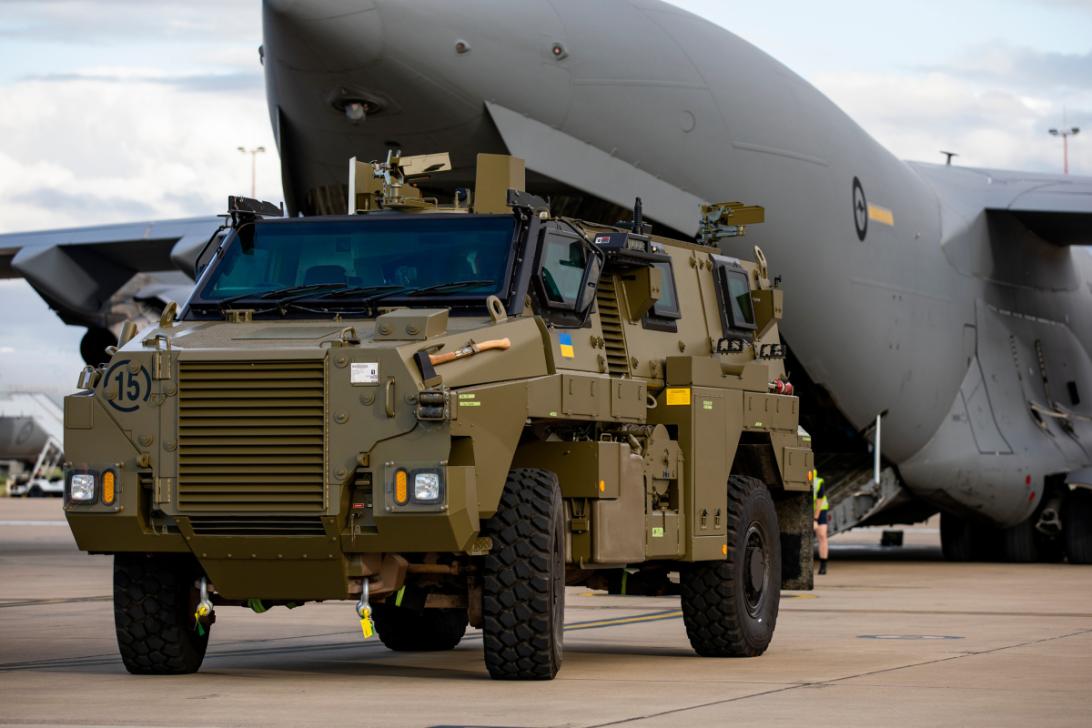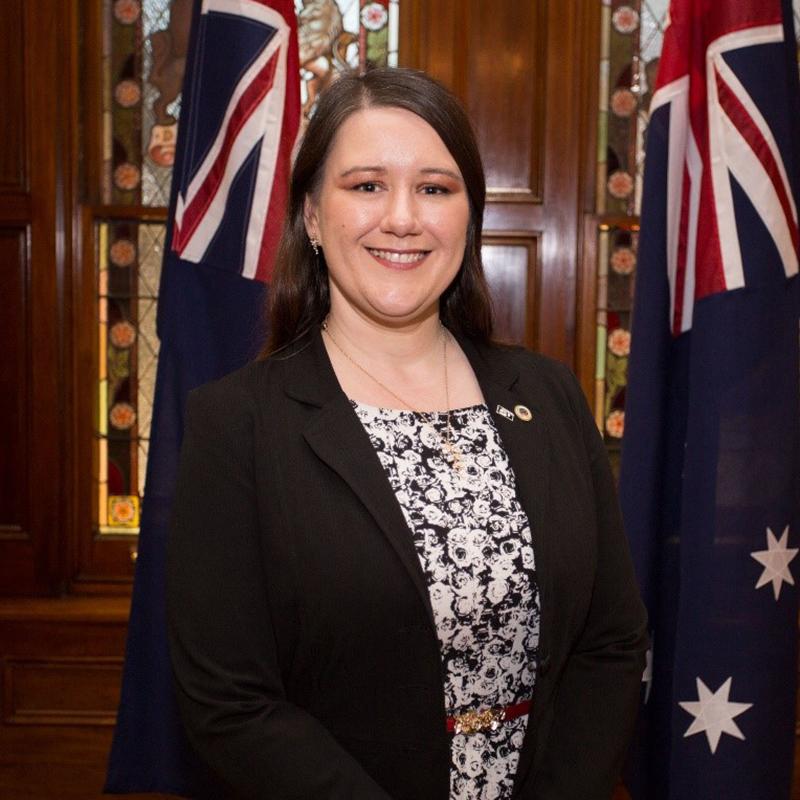Australia is building a robust, resilient and globally-competitive defence industry. It exports innovative defence technologies to key global partners and supports an agile and capable Australian Defence Force (ADF).
Are you looking to invest in Australia’s defence sector? We offer:
- A highly skilled workforce.
- A transparent regulatory environment.
- Large scale projects of major significance including major shipbuilding and land forces projects.
- Governmental support for key and critical technologies and subsectors.
- Strong export opportunities and partnerships with key international and region allies.
- Established pathways for collaboration between academia, government and industry.
Department of Defence spend contributed $10.6 billion in Gross Value Added (GVA) to the Australian economy in 2021-22, up 20.3 per cent from 2020-21.
The Australian Government will invest A$3.4 billion over 10 years on defence innovation via the Advanced Strategic Capabilities Accelerator.
Source: Australian Government 2023
Thinking about entering the Australian market?
- Investors typically establish a new company, register as a foreign company or acquire an existing company. Assess your options with our Investor Guide.
- Austrade is Australia’s national investment promotion agency. We attract and facilitate game-changing foreign direct investment into Australia. Our team of business and investment specialists can connect investors to early-stage opportunities in Australia and provide direct and tailored professional assistance. Find out how we can help.
An ideal hub for global growth
With ready export markets, Australia is your ideal location to develop defence technology. We’re welcoming strategic partners to help us build a stronger, more sustainable and more globally competitive defence industry and pursue export opportunities.
Australia has identified technologies critical to its national security, including shared priorities with allies such as the AUKUS partners. Our relationships with partners including the Five Eyes and the Quad (a diplomatic network with Japan, the United States and India) create opportunities for Australian defence companies with innovative technologies.
The Australian Government facilitates the responsible export of military and dual-use goods, software and technology in accordance with Australian export controls laws. You’ll find advocacy and support through the Australian Defence Export Office, which coordinates whole-of-government efforts to support the export success of Australian defence industry.
Some of our defence exports
- More than 70 companies share more than A$3 billion in contracts as part of the global Joint Strike Fighter Program investment. (Source: Australian Government 2023)
- Thales Australia Bushmaster Protected Mobility Vehicles, designed and built in Australia, are used by a number of countries including Fiji, the Netherlands, New Zealand, Ukraine and the United Kingdom.
- The Nulka Active Missile Decoy protects ships from missiles and has been adopted by several nations. Its concept of a hovering rocket decoy was initiated in Australia by the Defence Science and Technology Organisation (DSTO) and developed in partnership with the US Department of Defence and BAE systems. It is currently deployed on over 150 Australian, US and Canadian warships.
- Droneshield, an Australian company that makes innovative AI-based counter drone systems, in July 2023 received a record A$33 million order from a US government agency. It followed a $9.9 million order from another customer among the Five Eyes community.

Opportunities to help upgrade our defence capability
Australia has committed to a major upgrade of its defence capabilities.
The Australian Government’s Defence spending for 2023-24 will reach A$53 billion, up from $49 billion in 2022-23.
The 2023 National Defence: Defence Strategic Review sets a blueprint for defence planning and resourcing to 2032-33 and beyond.
The Australian Government is investing in immediate priorities identified in the Defence Strategic Review, including:
- $9 billion for the nuclear-powered submarine program through the AUKUS partnership.
- $4.1 billion for long-range strike capabilities.
- $3.8 billion for northern base infrastructure.
- $900 million on defence innovation.
An inaugural National Defence Strategy to be published in 2024 will further detail investment priorities in line with the review.
The Australia Government has budgeted A$90billion for our capability acquisition program from 2022-2023 to 2026-27.

Fast facts
- Australia’s priority export markets include: US, UK, EU, UAE, and Japan. The Indo-Pacific region is also a key market.
- Department of Defence spend contributed $10.6b to the Australian economy in 2021-22. Gross Value Added (GVA) was up 20.3% from the previous year – double total economic growth (Source: ABS 2022).
- Over five years from 2016-17 to 2021-22, Defence’s contribution to the Australian economy grew from A$6.3b to A$10.6b, an increase of 67.8%. Over the same period, total economy GVA grew by 31.7% (Source: ABS 2022).
- Major ongoing procurement projects include: the AUKUS nuclear propelled submarine project, 20 M142 High Mobility Artillery Rocket System (HIMARS), 40 UH-60M Black Hawk helicopters and 129 Redback infantry fighting vehicles.
- Leading international companies have a significant presence in the Australian defence market including: BAE Systems Australia, Thales Australia Limited, Hanwha Defense Australia, Rheinmetall Defence Australia, Saab Australia, Lockheed Martin Australia and Boeing Defence Limited.
- Australia’s defence industry sector employs over 61,000 people. Employment increased 17.1 per cent from 2020-21 to 2021-22 (Source: ABS 2022).
Government investing in emerging technologies
- The Advanced Strategic Capabilities Accelerator (ASCA) launched in July 2023 to drive development of new and innovative technologies for the Australian Defence Force. ACSA aims to accelerate the acquisition of technology, especially from the private sector and research institutions. Priority capabilities for ASCA include hypersonics, directed energy, trusted autonomy, quantum technology, information warfare and long-range fires. The Australian Government is investing A$748 million in ASCA over the next four years, and A$3.4 billion over the next decade.
- A major focus of the AUKUS partnership with the United States and United Kingdom is driving defence innovation. The AUKUS partners are collaborating across six advanced capabilities under AUKUS Pillar 2: advanced cyber, artificial intelligence and autonomy, quantum technologies, undersea warfare, electronic warfare, and hypersonics/counter-hypersonics. AUKUS aims to support technological sharing between allies in addition to breaking down barriers for intellectual property transfer, domestic manufacturing, and domestic maintenance of key weapons, technology and capabilities.
- The Defence Science and Technology Group (DSTG) is the Australian Government’s lead agency responsible for applying science and technology to address defence and national security challenges. It creates opportunities for partnerships between industry, academia and government to deliver future-focused defence technologies on key focus areas including surveillance and space technologies; chemical, biological and radiological and nuclear (CBRN) defence; robotics and automation; cyber and operations analysis.
- The Australian Defence Science and Universities Network (ADSUN), led by DSTG, facilities Defence engagement and cooperation with the national innovation ecosystem. Members include the Defence Science Centre (Western Australia), Defence Innovation Network (NSW), Queensland Defence Science Alliance, Defence Innovation Partnership (South Australia and NT), and the Defence Science Institute (Victoria and Tasmania). The network supports commercial opportunities by providing advice on Defence priorities, capabilities, needs and gaps, and helping businesses to understand the Defence capability supply chain.
- Trusted Autonomous Systems (TAS) is Australia’s first Defence Cooperative Research Centre, working with the Department of Defence to grow Australia’s defence capability in advanced autonomous and robotic technology.
- Our national science agency CSIRO has expertise in defence research spanning early development to testing. Its projects include the Queensland Centre for Advanced Technologies, the Artificial Intelligence roadmap, Bluelink ocean forecasting, and DARPA Challenge.
- The Australian Industry & Defence Network (AIDN) is a membership-based industry association for the Defence industry operating Australia wide.
- Defence Trailblazer is a new body led by the University of Adelaide and UNSW that aims to transform the way researchers and industry work together to solve real-world defence problems. The Australian Government and university partners are each investing $50m with an expected $140m from industry. Its aim is to deliver 100 new defence technologies over four years.
Incentives, grants and support
- The Australian Government is working to establish a new A$15 billion financing vehicle, the National Reconstruction Fund. It will drive investments into priority areas of the Australian economy including defence, critical technologies and advanced manufacturing.
- The Office of Defence Industry Support (ODIS) offers advice and support for small to medium enterprises to do business with Defence.
- The Defence Global Competitiveness Grant helps businesses investing in projects that build their defence export capability. It offers grants of $15,000 to $150,000 for up to 50% of the cost of investing in projects.
- The Sovereign Industrial Capability Priority Grant provides funding for businesses to build industrial capabilities that fit with Defence’s Sovereign Industrial Capability Priorities. It offers grants of $50,000 to $1 million for up to 50% of the cost of a project.
- The Joint Strike Fighter Industry Support Program - Sustainment Grant provides businesses with funding to develop new or improved capabilities to win work in the sustainment phase of the Joint Strike Fighter Program. Grants from $50,000 up to $250,000 to fund up to 50% of eligible project expenditure for phase 1 and 2.
- Defence Export Controls (DEC) regulates the export and supply of military and dual-use goods and technologies and can provide assessment and advice on permits.
- The Australian Tax Office’s New Investment Engagement Service gives tailored guidance on tax issues to businesses planning significant new investments in Australia.
Case studies
- Traditionally a medical laser company, Norseld worked closely with Defence via the Centre for Defence Industry Capability (now known as the Office of Defence Industry Support) to develop laser technology for F-35s.
- Sikorsky Aircraft, a Lockhead Martin company, established maintenance and warehouse facilities in NSW in 2014. It offers a helicopter maintenance and logistics hub for the Royal Australian Navy’s fleet of 24 Seahawk helicopters, in buildings adjacent to Naval facilities on the state’s south coast.
- Segula Technologies has established its Asia-Pacific headquarters in South Melbourne. Segula is a French engineering company with 10,000 employees in 30 countries. Its Melbourne operations focuses on naval defence, automotive, rail, aerospace and energy.
- The Victorian Government signed a memorandum of understanding with Hanwha, a major global South Korean company, to support the establishment of Hanwha’s defence manufacturing operations in Geelong. In addition to ongoing maintenance contracts, Hanwha is looking to build 30 self-propelled Howitzers and 15 armoured resupply vehicles.
- SYPAQ Systems established a new Defence Autonomy Centre of Excellence in Fishermans Bend, where it will develop innovative technologies and intellectual property related to autonomous systems and cyber security.
- Australian company SPEE3D is using patented metal 3D printing technology to help the Australian defence force solve repair and maintenance problems across the vast training areas of the Northern Territory. The company’s WarpSPEE3D harnesses the power of kinetic energy to print large metal parts at a record-breaking speed of 100grams per minute. A series of remote Northern Territory trials proved that the technology could be deployed successfully in the field.
- Liferaft Systems Australia (LSA), based in the state of Tasmania, designs and manufactures inflatable inclined slides for marine evacuation systems. Systems supplied by LSA are fitted to the Royal Navy’s (UK) newest aircraft carrier and are in service with navies worldwide.
Robotics, Autonomous Systems and Artificial Intelligence Report
The 2022 report analyses Australian expertise in emerging defence technologies. It includes a RASAI capabilities matrix that covers 49 Australian companies.
Australian Defence Cyber Industry Capability Report
Australia’s defence cyber industry is growing quickly. To highlight our industry capabilities, Austrade has created Australia’s first Defence Cyber Industry Capability report.
